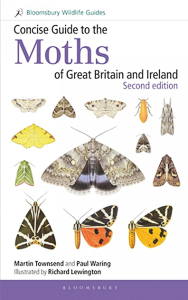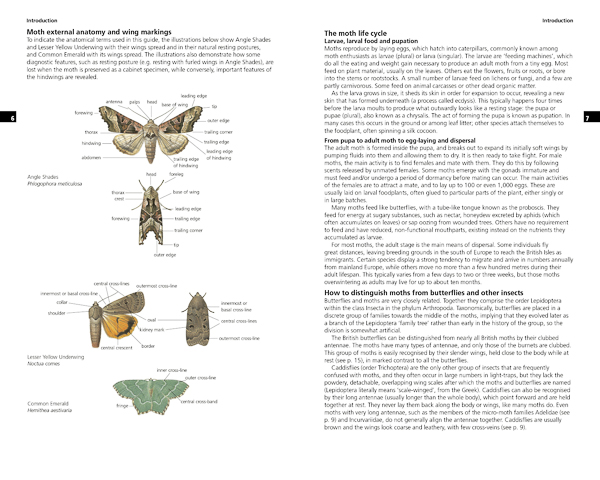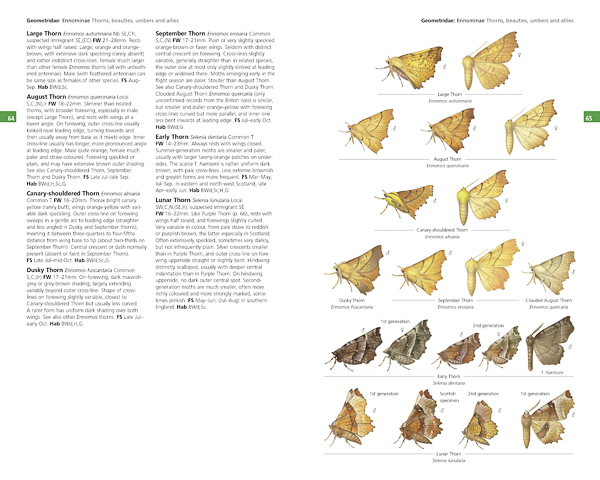 |
Many lepidopterists will own a copy of the classic Field Guide to the Moths of Great Britain and Ireland, whose authoritative text is complemented with amazing illustrations by the inimitable Richard Lewington. While the title of that book suggests it is a field guide, many enthusiasts (myself included) consider it too wieldy to take practically into the field.
As a companion guide, this latest edition of Concise Guide to the Moths of Great Britain and Ireland addresses this gap, and is clearly designed to be taken into the field. Although not shown in the images in this review, the book has a spiral binding that allows it to be opened flat, and I can well imagine moth recorders using this guide each morning when emptying their moth traps and attempting to distinguish similar species.
 |
Those of us that have endured the many publications that separate the text and the accompanying images, this book is a breath of fresh air where, as one might expect, the reader can 'zone in' on their subject by first finding an appropriate illustration and then extracting essential characteristics from the text on the opposite page, including habitat, flight period, distribution and subtle differences in appearance, including named forms (which are usually illustrated too). Of course, being a concise guide, the book is limited in the amount of information provided for each species and the book does not, for example, mention larval foodplants, nectar sources or behaviour.
 |
Even when not in the field, the book is a delight to flick through, especially if you simply want to marvel at the diversity of species we have on our shores. I could well imagine this book providing an excellent introduction to the mothing world, and the highest compliment I can pay the authors is that, despite being sent a review copy, I have purchased another for my grandson, which I know he will love.
I usually conclude a review with a phrase such as 'recommended' or 'highly recommended'. In this case, I'd have to use the adjective 'essential', and wholeheartedly agree with the publisher's own sentiments: "an essential addition to every moth-lover's field kit".